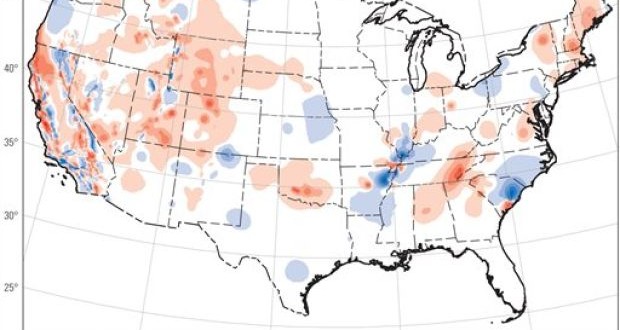The caller from a Florida area code had a concern: He was calling Yellowstone Insider offices because he had read on the Internet the Yellowstone National Park volcano was going to blow and wanted to know if there was a date set yet for the event — he didn’t want to head out on vacation if the volcano had already erupted.
We reassured the polite caller the volcano had not erupted, that the Yellowstone volcano eruption risk was minimal, no earthquakes were predicted and that his vacation plans were safe. Guess I shouldn’t believe everything I read on the Internet, he concluded with a chuckle.
It’s sometimes hard to cut through the clutter of apocalyptic Websites, YouTubers proclaiming the end of the world presaged by a Yellowstone volcano eruption after a massive earthquake, and amateur scientists piecing together disparate bits of unrelated data to predict that the Yellowstone earthquake risk was high. Helium, forced evacuations of surrounding communities, animals leaving the Park, small changes in the ground level within the caldera and a 4.8-magnitude earthquake earlier this year are all indications that the volcano is about to blow: a catastrophic event that would impact roughly half of the United States.
Adding to the general paranoia: a U.S. Geological Survey report indicating there was a slightly higher chances of a Yellowstone-area earthquake, as a 2006 risk map was updated with new data. (The USGA creates risk maps so builders can determine how much earthquake-proofing new construction requires, among other reasons.) That, of course, is proof the volcano is going to blow. From the Missoulian:
“The new maps show how Yellowstone has had a relative increase in the hazard,” University of Utah geophysicist Bob Smith said. “It’s not a lot — it’s like 5 to 10 percent of peak acceleration.”
The USGS map of seismic hazards also shows that the region is as seismically hazardous as anywhere in the United States.
“It’s an area of well-above-normal earthquake hazard,” Smith said. “And now with all the population going in — all the new roads and dams — also high risk.”
Of course, it didn’t take a new map for folks to know that the general Yellowstone National Park area is as seismically hazardous as anywhere in the United States: the steady presence of earthquakes in the region confirms that, even if the activity level is low when compared to historical records. In fact, activity levels are pegged by the USGA’s Yellowstone Volcano Observatory as being normal.
Here’s a statement from the USGA as to the specific risk of earthquakes and eruptions in Yellowstone:
Though we love doing research at YVO, we prefer it when the research is on topics geological rather than the origin of false rumors. Nevertheless, we have received enough concerned emails and phone calls that we’ve spent some time tracking down a few of the statements made on various “alternative Internet news sources.”
1) First, everyone should know that geological activity, including earthquakes and ground uplift/subsidence is well within historical norms and seismicity is actually a bit low at present.
2) Concern over road closures is much overblown. There’s been one road closure of a small side road – just over three miles long – that was closed for two days. As one can imagine, it is not easy to maintain roads that pass over thermal areas where ground temperatures can approach those of boiling water. Roads at Yellowstone often need repair because of damage by thermal features as well as extreme cold winter conditions.
3) The park has not been evacuated. This one is pretty easy to verify by everyone. If the Old Faithful webcam shows people, or if news articles are coming out about a hobbyist’s remote control helicopter crashing into a hot spring, Yellowstone is certainly open for business.
4) No volcanologists have stated that Yellowstone is likely to erupt this week, this month or this year. In one recent article, a name was attributed to a “senior volcanologist”, but that person does not appear to exist, and a geologist with that name assures us that he did not supply any quotes regarding Yellowstone.
5) Finally, we note that those who’ve kept track of Yellowstone over the past decade or so, have seen a constant stream of “predictions” regarding imminent eruptions at Yellowstone. Many have had specific dates in mind, none had a scientific basis, and none have come true.
We will continue to provide updates on geological activity at Yellowstone, and educational materials to help understand the science around Yellowstone monitoring.
Virtually everything known about Yellowstone’s spectacular volcanic past comes from the scientists who work at this observatory, at all our eight member agencies. We’re the ones who mapped the deposits, figured out the ages of the eruptions, measured the gases, located the earthquakes, and tracked the ground movement. A few of us have been doing it for over forty years. We will continue to help you understand what’s happening at Yellowstone now, and what’s likely to happen in the future.
It’s easy and tempting to throw together a bunch of unrelated events and Internet myths to argue for some earth-shattering event. And it seems like some of the alternative news sites predicting a Yellowstone catastrophe really do want to see one occur: it would justify their predictions and worldview.
 Yellowstone Insider Your Complete Guide to America's First National Park
Yellowstone Insider Your Complete Guide to America's First National Park





